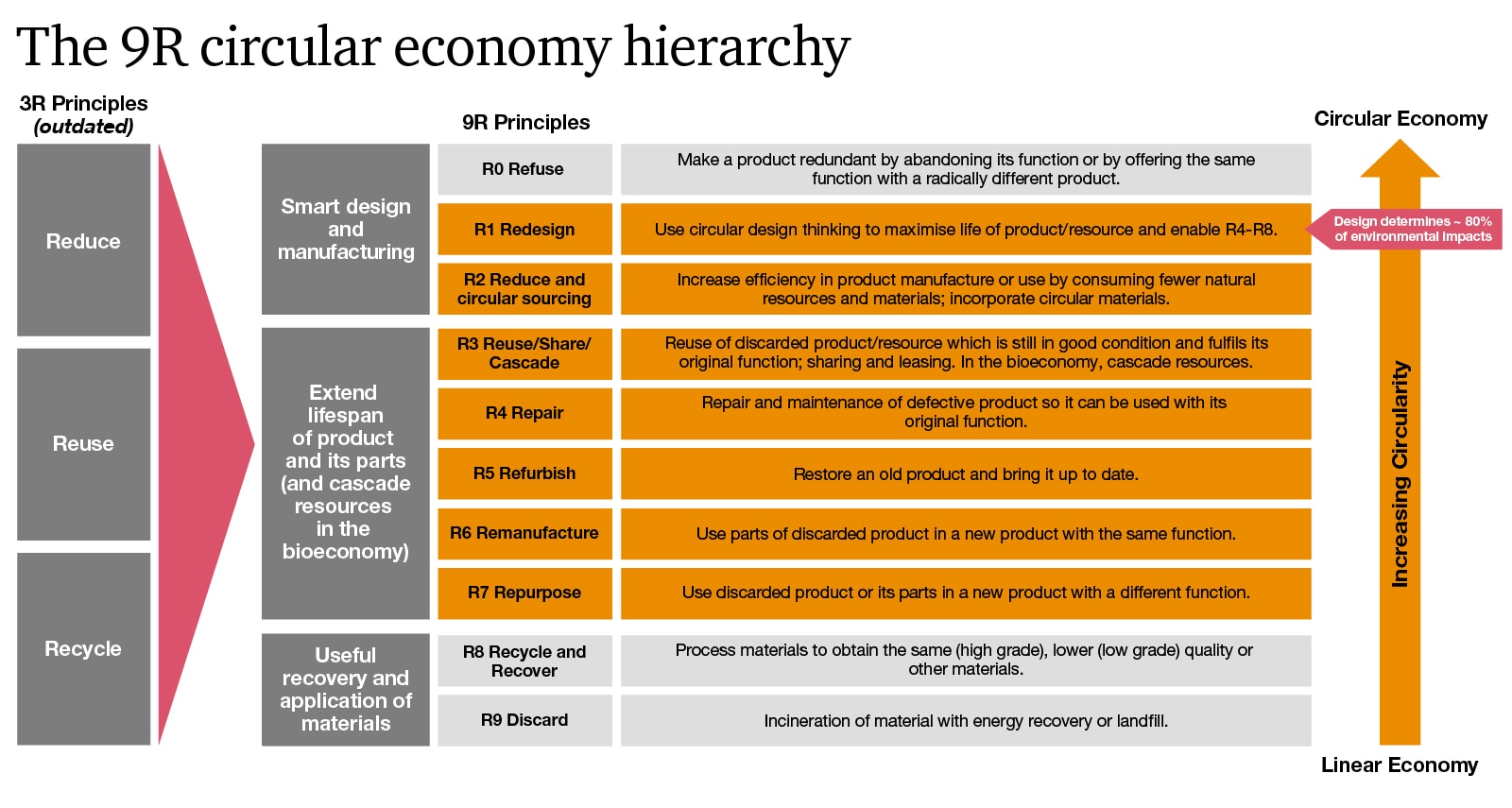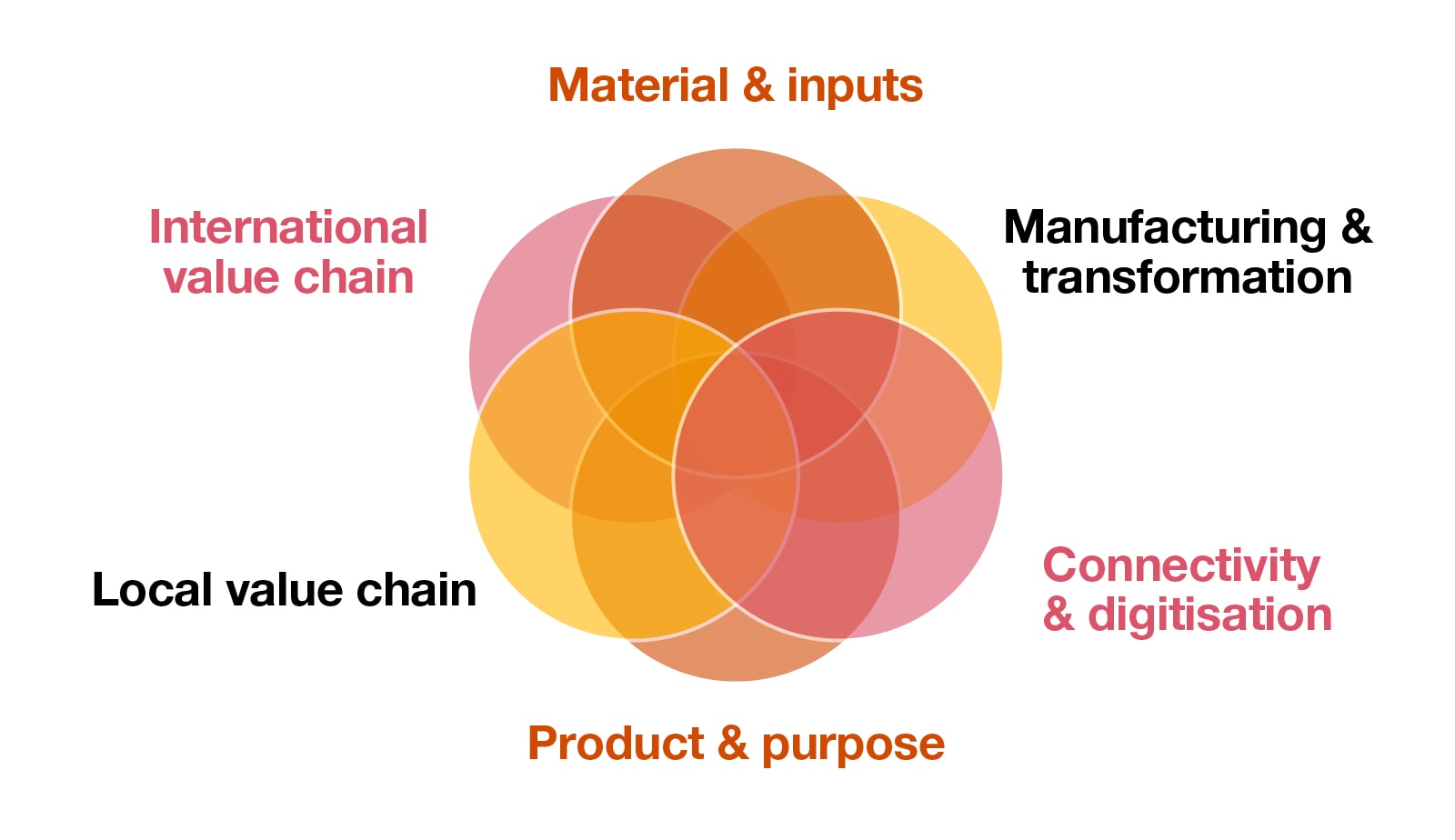By Jeremy Prepscius and Melissa MacEwen
Overshoot DayOpens in a new window marks the day of the year when humanity’s demand on nature and resources exceeds earth’s biocapacity. In 1971, the Overshoot Day was December 25Opens in a new window and since then, this day has consistently occurred earlier every year. In 2023, it happened on 2 AugustOpens in a new window, meaning that our global resource consumption exceeded the planet's capacity long before the year's end. Human consumption now requires the natural resources of 1.75 worldsOpens in a new window instead of a single one; half of this is just for food.
With raw material extraction increasing and material reuse decliningOpens in a new window, Overshoot Day in 2024 will likely be even earlier. Some countries in Asia Pacific can expect their overshoot day to arrive as early as AprilOpens in a new window. What can we do?
Collectively, we know the answer: we need solutions that balance sustainable consumption with sustainable production. But in the light of more recent challenges — a rising global population, delayed progressOpens in a new window on the United Nations Sustainable Development Goals (yet with increasing climate change hazards and a mounting waste crisis) and an increased appetite for raw materials like lithium for the electric vehicle (EV) industry — we’re in a tough spot. Building circular supply chains is one way to tackle this conundrum head-on.
Circular supply chains
Businesses can create supply chains that recover and reuse the resources used to create their products. As the world’s major supplier of manufactured goods and commodities, Asia Pacific businesses are on the front lines of such a transition.
The 9R framework below explains a circular model. The hierarchy follows both the principle of minimising environmental impact and maximising value capture. It starts with product purpose, design and manufacturing (Refuse, Redesign, Reduce and circular sourcing), focuses on product and component lifespan extension (Reuse/Share/Cascade, Repair, Refurbish, Remanufacture, Repurpose) and ends with the useful recovery and application of materials (Recycle, Recover). PwC research finds 30-50% value capture opportunities in refurbishment, reuse and remanufacturing and 5-25% value capture in cascading biological feedstocks, through shortening feedback loops therefore maintaining the value of resources in active use for longer. For instance, the scrap value of the metals in a smartphone is just a few dollars; in contrast, refurbishing a smartphone so that it can continue to be used, means it can be worth hundreds of dollars again.

Adapted from ResearchGateOpens in a new window
To enable circular models to scale, supply chains need to become more connected and circular themselves. Knowledge of material flows, manufacturing processes, economic incentives, logistics and transformation opportunities lie distributed throughout a value chain. Harvesting a wider range of data from supply chain partners to identify opportunities and leveraging capabilities within the supply chain to enable more circular value chains will require adapting traditional supply chain relationships.
Companies and their value chains will need to work more closely together to enable smarter product use and manufacturing, as well as useful applications of materials post- first consumer use.

Why else shift to a circular model?
Beyond reducing environmental impact, it makes good business sense.
New circular economy policies and reporting standards are emerging across the world. In Europe, the European Green DealOpens in a new window is designed to transform the European Union (EU) economy and ensure no net emissions of greenhouse gases by 2050. The Green Deal aims to decouple economic growth from resource use and leave no person or place behind. A key building block of this endeavour is Europe’s Corporate Sustainability Reporting Directive (CSRD), with reporting commencing in 2025. It will be mandatory for many organisations worldwide — including those in Asia Pacific — to begin disclosing information about their environmental, social and governance (ESG) practices. Asia Pacific business leaders should determine if they are required to report under the new CSRDOpens in a new window. Failure to take action will increase the risk of penalties for individual companies, such as financial sanctions, exclusion from investor portfolios and reputational damage. It could also have implications for a territory's ability to trade with the EU if there is widespread non-compliance.
The CSRD is just one piece of the European Green Deal. Other emerging regulations covering packaging, eco-design and battery passport requirements will also, in turn, require some Asia Pacific businesses to reflect on their circular economy status for the first time. Manufacturers of goods destined for export to the EU will need to adapt design and materials to include recycled content or be designed according to circular principles (durability, reusability, repairability and recyclability), and require greater transparency on material origins and requirements for end-of-life management. Regulatory requirements will cascade down via buyers to suppliers in Asia Pacific.
More than 70 national roadmaps and strategies have been launched globally, and a further 2700 circular economy-related policies (such as plastic taxes, bans and extended producer responsibility schemes) now exist. In 2021, the Association of Southeast Asian Nations (ASEAN) announced its own circular economy framework and the need for ASEAN business practices and regulations to keep up in order to retain access as preferred suppliers to the world.
Japan, China, Vietnam and Indonesia all have national circular economy policies/strategies, while other countries in the region have sector or product specific resource efficiency circular policies and are developing comprehensive roadmaps. Japan (PDF)Opens in a new window’s Green Transformation (GX) Plan, released in late 2023, is an extraordinary push towards greater sustainability. It’s an investment roadmap for several trillion yen of public-private financing to support a circular economy, carbon neutrality and other initiatives. Some private sector companies in JapanOpens in a new window have already made the leap. Nissan announced plans to lease its electric vehicles, rather than sell them, in order to keep metals within the country, while Toyota started offering a subscription service for its first mass-produced EV.
Within the private sector generally, several large international brands are considering circularity, through changes to packaging and product materials, launching ‘product as a service’ lines and exploring new revenue streams from by-products and waste. Partly, this has been driven by increasing consumer awareness of the environmental impact of traditional linear models, with issues like plastic pollution and resource depletion gaining significant public attention. The recent United Nations Plastics TreatyOpens in a new window, is due in part, to such growing consumer pressure.
As regulator — and consumer pressure — grows, more investment decisions will be influenced by circularity assessments. Businesses will look deeper into their supply chain and preferred suppliers will be those implementing a circular economy approach.


















